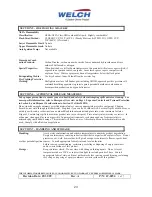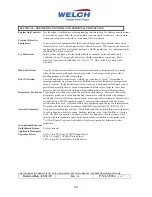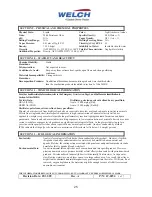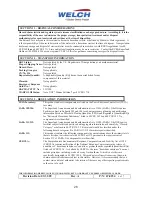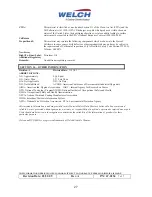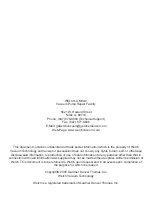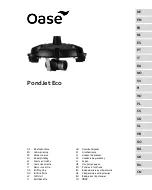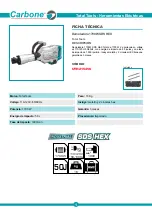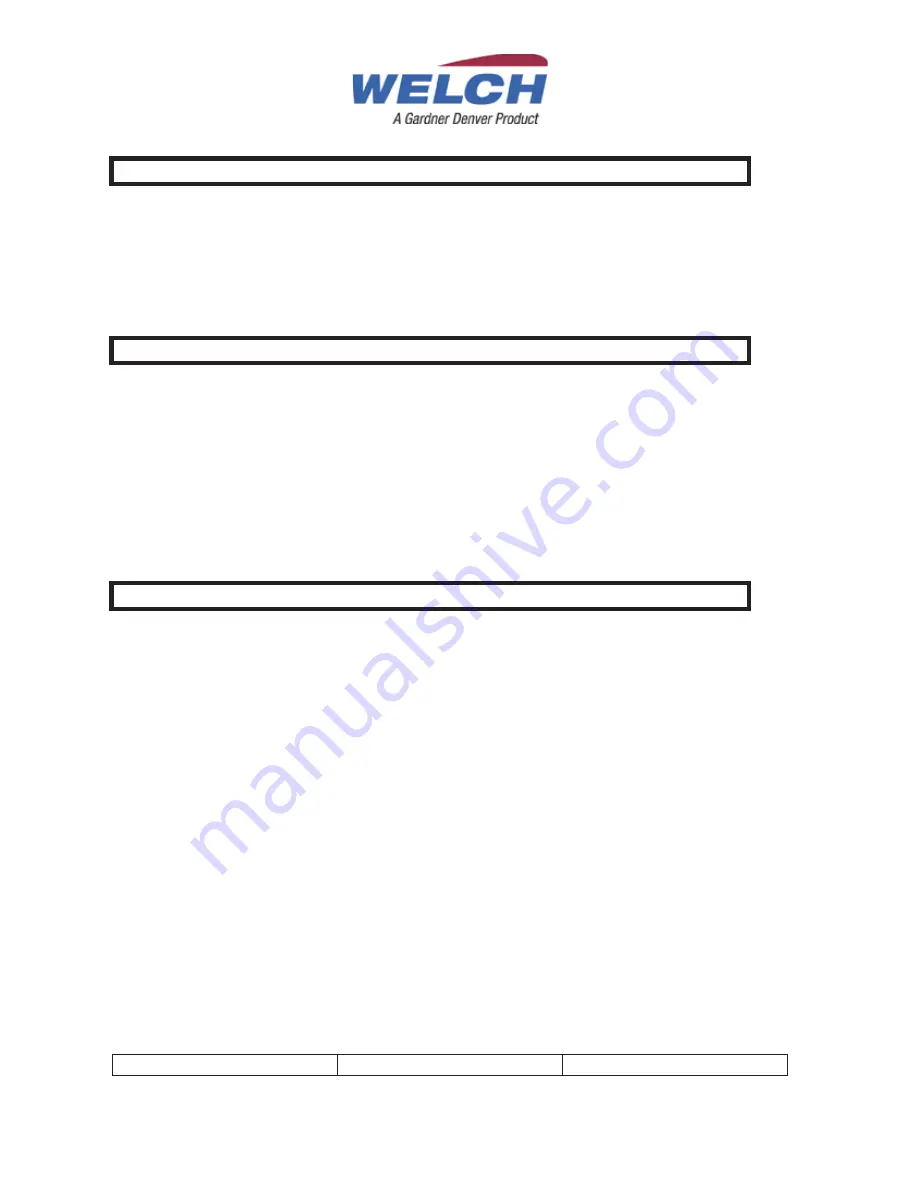
26
THE INFORMATION HEREIN IS GIVEN IN GOOD FAITH, BUT NO WARRANTY, EXPRESS OR IMPLIES, IS MADE.
Revision Date: 03/31/09
Rev. A
P/N: 67-0254
6 of 7
SECTION 13 – DISPOSAL CONSIDERATIONS
Hazard characteristic and regulatory waste stream classification can charge product use. Accordingly, it is the
responsibility of the user to determine the proper storage, transportation, treatment and/or disposal
methodologies for spent materials and residues at the time of disposition.
Conditions of use may cause this material to become a hazardous waste, as defined by Federal or State regulations. It
is the responsibility of the user to determine if the material is a hazardous waste at the time of disposal. Transportation,
treatment, storage and disposal of waste material must be conducted in accordance with RCRA regulations (see 40
CFR 260 through 40 CFR 271). State and/or local regulations may be more restrictive. Contact the RCRA/Superfund
Hotline at (800) 424-9346 or your regional US EPA office for guidance concerning case specific disposal issues.
SECTION 14 – TRANSPORT INFORMATION
DOT Status:
Not regulated by the U.S. Department of Transportation as a hazardous material.
Proper Shipping Name:
Not
regulated
Hazard Class:
Not
regulated
Packing Group(s):
Not
applicable
UN/NA ID:
Not
regulated
Reportable Quantity:
A Reportable Quantity (RQ) has not been established for any
components of this material.
Placards:
Not
applicable.
Emergency Response
Guide No.:
Not applicable.
HAZMAT STCC No.:
2911990
MARPOL III Status:
Not a DOT “Marine Pollutant” per 49 CFR 171.8
SECTION 15 – REGULATORY INFORMATION
TSCA Inventory:
This product and/or its components are listed on the Toxic Substance Control Act (TSCA)
Inventory.
SARA 302/304:
The Superfund Amendments and Reauthorization Act of 1986 (SARA) Title III requires
Facilities subject to Subparts 302 and 304 to submit emergency planning and notification
information based on Threshold Planing Quantities (TPQs) and Reportable Quantities(RQs)
for “Extremely Hazardous Substances” listed in 40 CFR 302.4 and 40 CFR 355. No
components were identified.
SARA 311/312:
The Superfund Amendments and Reauthorization Act of 1989 (SARA) Title III Requires
facilities subject to this subpart to submit aggregate information on chemicals by “Hazard
Category” as defined in 40 CFR 370.2. This material would be classified under the
following hazard categories :No SARA 311/312 Hazard categories identified.
SARA 313:
This product contains the following components in concentrations above the minimis levels
that are listed as toxic chemicals in 40 CFR Part 372 pursuant to the requirements of
Section 313 of SARA: No components were identified.
CERCLA:
The Comprehensive Environmental Response, Compensation, and Liability Act of 1980
(CERCLA) requires notification of the National Response Center concerning release of
quantities of “hazardous substances” equal to or greater than the reportable quantities (RQs)
listed in 40 CFR 302.4. As defined by CERCLA, the term “hazardous substance” does not
include petroleum, including crude oil or any fraction thereof which is not otherwise
specifically designated in 40 CFR 302.4. This product or refinery stream is not known to
contain chemical substances subject to this statute. However, it is recommended that you
contact state and local authorities to determine if there are any other reporting requirements
in the event of a spill.












